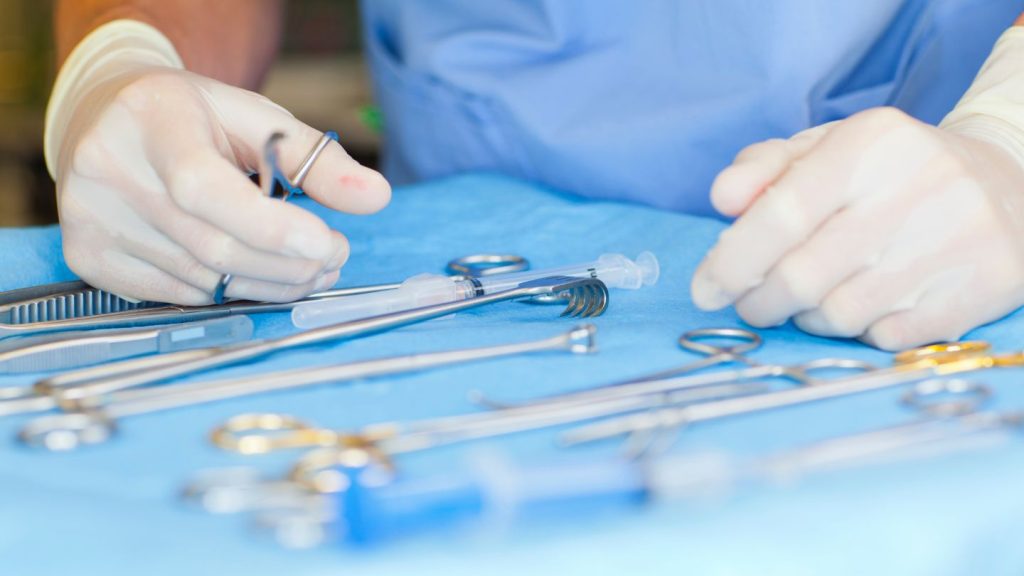
How to Minimize Scarring After Gastric Sleeve Surgery: Top Tips and Tricks
Worried about scarring after your gastric sleeve surgery? Discover proven tips on how to minimize scarring after gastric sleeve surgery. This guide covers pre-surgery preparations, surgical techniques, and post-surgery care to help you achieve discreet scars.
Key Takeaways
- Understanding the types and factors influencing scarring after gastric sleeve surgery is essential for effective management and healing.
- Pre-surgery preparations, such as a balanced diet and proper skin care, play a significant role in minimizing scarring post-surgery.
- Post-surgery care, including proper wound care, use of silicone products, and massage therapy, is crucial for enhancing scar healing and reducing visibility.
Understanding Gastric Sleeve Scars
Gastric Sleeve Surgery serves as a powerful tool in combating obesity, but similar to other surgical procedures, it results in scars. These marks are part of the body’s natural recovery process. While they are generally small and often fade over time, patients considering weight loss surgery may have concerns about their appearance.
Laparoscopic procedures typically involve between one and five small incisions, resulting in far less visible scars compared to traditional open surgeries. Scar formation depends on various factors, such as the surgical technique used and the individual’s natural healing ability. With advancements in minimally invasive techniques, patients can expect significantly less prominent scars. Understanding the factors that contribute to scar formation can empower patients to take proactive steps in their healing journey.
Types of Scars from Gastric Sleeve Surgery
Bariatric surgery scars may vary in appearance and texture. Some may remain flat and subtle, while others could become thickened or raised due to an overproduction of collagen. Keloid scars, which extend beyond the incision area, and hypertrophic scars, which remain raised but within the incision boundary, are the most common.
It’s important to address scar management proactively. A personalized treatment plan tailored to the patient’s skin type and healing capacity can significantly minimize scar visibility. For example, younger individuals or those with darker skin tones may be more prone to developing keloid scars, and targeted interventions can help mitigate these risks.
Factors Influencing Scar Formation
The formation and healing of scars following gastric sleeve surgery are affected by a variety of elements. An individual’s genetic makeup is critical as it can predetermine their likelihood of developing noticeable scars. Scars tend to be more prominent in younger individuals because they produce more collagen. The scar’s placement on the body and the person’s skin type are key factors that determine how a scar will look.
General health plays an essential role in influencing how well the body heals and thus affects what scars will ultimately look like post-surgery. Both patients undergoing Sleeve Surgery and their surgeons can take informed steps towards reducing scarring when equipped with knowledge about these influential factors, aiming for better healing results overall.
Pre-Surgery Preparation for Minimal Scarring

Preparing for gastric sleeve surgery by adopting healthy behaviors and working closely with your healthcare team can significantly enhance healing and reduce scarring. These proactive measures started well in advance and contributed to a smoother recovery process and better aesthetic results. It is essential to consult with your surgeon to understand the likely size and location of scars, setting realistic expectations for the outcome.
With advancements in bariatric surgery, including minimally invasive techniques, patients can expect smaller and less noticeable scars compared to traditional surgical methods. These modern approaches, combined with proper preparation, are key to achieving optimal healing.
Nutritional Preparation
A professionally guided nutritional plan plays a crucial role in preparing the body for surgery and minimizing scarring. Collaborating with a dietitian ensures you receive a diet tailored to your individual needs, rich in essential nutrients like protein, vitamins A, C, and E, and minerals that promote skin repair. Foods such as lean meats, leafy greens, citrus fruits, and nuts are excellent sources of these nutrients.
This personalized approach primes the body for healing, supports collagen synthesis, and minimizes the risk of complications, ensuring a smoother recovery with reduced scar formation.
Skin Care Routine
A pre-surgery skin care regimen supervised by medical professionals can strengthen the skin and prepare it for better healing. Dermatologist-recommended products tailored to your skin type can boost hydration and resilience, which are critical for post-surgical recovery.
Instead of using over-the-counter remedies like petroleum jelly, your care team may suggest specific medical-grade products to enhance the skin’s condition. These targeted interventions, along with minimizing sun exposure and maintaining adequate hydration, ensure the skin is in optimal condition for the procedure and support faster, more effective healing afterward.
Surgical Techniques to Minimize Scarring

The surgical technique used during gastric sleeve surgery plays a critical role in determining the size and visibility of scars. Traditional open surgery often results in larger and more noticeable scars due to larger incisions. However, modern laparoscopic methods, which use several small incisions, offer significantly less visible scarring, faster recovery, and reduced risks of complications.
With advancements in technology, cutting-edge options like single-incision laparoscopic surgery and robotic-assisted techniques have further revolutionized the field. These methods focus on limiting both the size and number of incisions, offering enhanced cosmetic results while ensuring patient safety.
Single-Incision Laparoscopic Surgery
Single-incision laparoscopic surgery is a minimally invasive approach performed through a single incision, often hidden in the belly button. This innovative technique minimizes visible scarring and promotes faster healing compared to conventional methods.
Performed by highly skilled surgeons, this approach not only reduces the number of incisions but also lowers the risk of complications, enabling patients to recover more comfortably and resume their daily routines sooner. This technique is an excellent option for patients seeking minimal scarring and optimal healing outcomes.
Minimally Invasive Techniques
Robotic-assisted gastric sleeve surgery represents the pinnacle of precision and innovation in bariatric procedures. Using state-of-the-art technology, surgeons can perform the operation with unparalleled accuracy, resulting in smaller incisions, less tissue damage, and reduced scarring.
This meticulous approach enhances the healing process and minimizes scar visibility, offering patients both physical and aesthetic benefits. With the use of robotic assistance, patients experience a streamlined recovery process, allowing them to return to normal activities more quickly.
By choosing advanced surgical techniques performed by experienced professionals, patients can achieve superior cosmetic and functional results, ensuring their journey is as smooth and effective as possible.
Post-Surgery Care for Better Healing

Post-operative care is a critical part of the healing process that directly impacts the visibility of weight loss surgery scars. Adhering to professional guidelines ensures proper wound healing, reduces the risk of complications, and promotes better cosmetic results. Your surgeon will provide personalized recommendations for maintaining cleanliness at the surgical sites, which is essential to prevent infections and optimize healing.
Professional interventions, such as the use of silicone products and massage therapy conducted under guidance, coupled with a focus on overall wellness, form the foundation of effective scar management. These strategies, implemented with professional support, can significantly enhance healing and minimize the prominence of scars.
Proper Wound Care
Maintaining proper wound care is vital for preventing infections and ensuring scars heal correctly. Your surgeon will provide specific instructions on keeping the area clean and identifying early signs of complications, such as redness or fluid discharge, which could lead to increased scarring if untreated.
Avoid using any over-the-counter products or home remedies without first consulting your surgeon. Once the incisions have fully healed, your care team may recommend safe and effective products specifically designed to improve scar appearance. These professional-grade options, combined with regular cleansing as directed, are essential for optimal healing.
Use of Silicone Sheets and Gels
Silicone-based products, such as gels and sheets, are widely regarded as one of the most effective professional solutions for scar management. These products provide hydration and protection to the skin, which is crucial for successful scar treatment. Your care team may recommend incorporating silicone products into your aftercare plan once the incisions have healed.
These medical-grade solutions, when used consistently under professional guidance, can help reduce scar visibility and improve overall healing outcomes, leaving the skin smoother and scars less noticeable.
Massage Therapy
Scar massage, when performed by a trained professional, can significantly aid in healing. Licensed therapists can use specific techniques to improve scar tissue elasticity and promote circulation, ensuring that nutrients and oxygen are delivered to the area to accelerate repair.
Attempting self-massage without professional input may lead to improper technique or excessive pressure, potentially worsening the scar. By including professionally supervised massage therapy in your post-surgery plan, you can achieve better results while ensuring your safety and comfort.
Lifestyle Tips to Support Scar Healing

It is crucial to foster the healing process of scars by adapting certain lifestyle habits to ensure minimal scarring. Keeping oneself well-hydrated, steering clear of sun exposure, and maintaining a consistent exercise regime all play significant roles in enhancing the quality of scar healing. Not only do these habits aid in diminishing the prominence of scars, but they also promote general wellness.
Incorporating these beneficial practices into your everyday life can amplify your body’s capacity for repair and lead to less visible scars that blend more seamlessly with the surrounding skin.
Read more: Diet After Gastric Sleeve SurgeryHydration and Nutrition
Hydration and nutrition remain fundamental to the healing process. However, ongoing dietary consultations can provide tailored recommendations, ensuring patients meet their nutritional needs for optimal scar repair. A professional-guided approach guarantees balanced recovery without over-reliance on generic advice.
Read more: Staying Properly Hydrated After Your Gastric Sleeve SurgeryAvoiding Sun Exposure
Rather than relying solely on sunscreen, patients should consult with dermatologists or their care team for additional protective measures, such as UV-protective clothing or medical-grade sunscreens, to protect healing scars from sun damage.
Regular Exercise
Engaging in consistent physical activity is essential for maintaining general health and facilitating recovery following a gastric sleeve procedure. Initiating gentle exercise shortly after the operation can aid in recuperation by boosting blood circulation and reducing the risk of post-surgical complications.
The enhancement of blood flow through regular exercise is crucial because it ensures that nutrients reach tissues that are healing, thus aiding scar repair. By making exercise a part of your daily regimen, you enhance the body’s ability to heal while also minimizing scarring from the surgery.
Psychological Impact of Scarring
Scarring, while a natural part of the healing process, can sometimes influence a person’s body image and emotional well-being. Visible scars following gastric sleeve surgery may lead to feelings of self-consciousness or concerns about appearance. However, it’s important to address these emotions as part of the overall recovery journey to ensure a holistic healing process.
By recognizing and embracing the transformative nature of your surgical experience, scars can be seen as a testament to your resilience and progress. Professional counseling, support groups, and mental health resources can provide valuable tools for managing the emotional aspects of post-surgical changes and help patients develop a positive outlook.
Body Image and Self-Esteem
While scarring and the physical changes following gastric sleeve surgery can impact self-confidence, it’s essential to focus on the significant health and lifestyle improvements achieved through the procedure. Working with licensed counselors or psychologists can help patients navigate feelings of reduced self-esteem and redefine their self-image in a positive light.
Support groups specifically tailored to individuals undergoing weight-loss surgery can also foster a sense of community and shared experience, helping patients feel understood and empowered.
Turning Scars into Symbols of Strength
Rather than viewing scars as imperfections, they can be embraced as symbols of determination and success. Professional therapists often encourage patients to see their scars as markers of personal growth and milestones in their weight-loss journey. By shifting the focus to what these scars represent—a life-changing commitment to health and well-being—patients can foster a healthier and more constructive relationship with their bodies.
Through professional support and a positive mindset, patients can celebrate their progress and recognize their scars as meaningful reminders of the incredible transformation they have undertaken.
Professional Treatments for Scar Management
Professional scar management treatments are available for patients seeking additional assistance in reducing scar visibility. These include:
Steroid Injections
Administered by qualified professionals, steroid injections can reduce inflammation and flatten raised scars, offering noticeable improvements over time.
Laser Therapy
This precise treatment, delivered by certified specialists, refines scar texture and color, making them less conspicuous. Laser therapy can be tailored to individual skin types and scar characteristics.
Surgical Revision
For patients with severe scarring, surgical revision by experienced bariatric surgeons can significantly enhance aesthetic outcomes. Combined with advanced techniques like laser therapy, this approach ensures the best possible results.
Summary
Achieving minimal scarring after gastric sleeve surgery involves a comprehensive strategy that combines state-of-the-art surgical methods, professional post-operative care, and individualized scar management techniques. Our practice is dedicated to providing patients with tailored support at every stage of their journey, enabling them to focus on their transformation with confidence. By following these expert guidelines, you can attain the best possible outcomes while celebrating your health and success milestones.
At Ascension Saint Agnes Bariatric Surgery, we are proud to offer exceptional care for individuals considering a gastric sleeve in Maryland. Our skilled team is committed to delivering comprehensive services, from pre-surgery consultations to post-surgery care, ensuring that every patient receives the expertise and support necessary for a successful weight loss journey. Contact us today to embark on your transformative path with Ascension Saint Agnes Bariatric Surgery.
Frequently Asked Questions
1. Will my scars fade completely over time?
Scars from gastric sleeve surgery may fade significantly over time but are unlikely to disappear completely. Following professional care recommendations can help minimize their visibility.
2. How soon after surgery can I start using treatments like silicone gels or sheets?
You can typically begin using silicone-based products once your incisions are fully healed, but always consult your surgeon before starting any scar treatments.